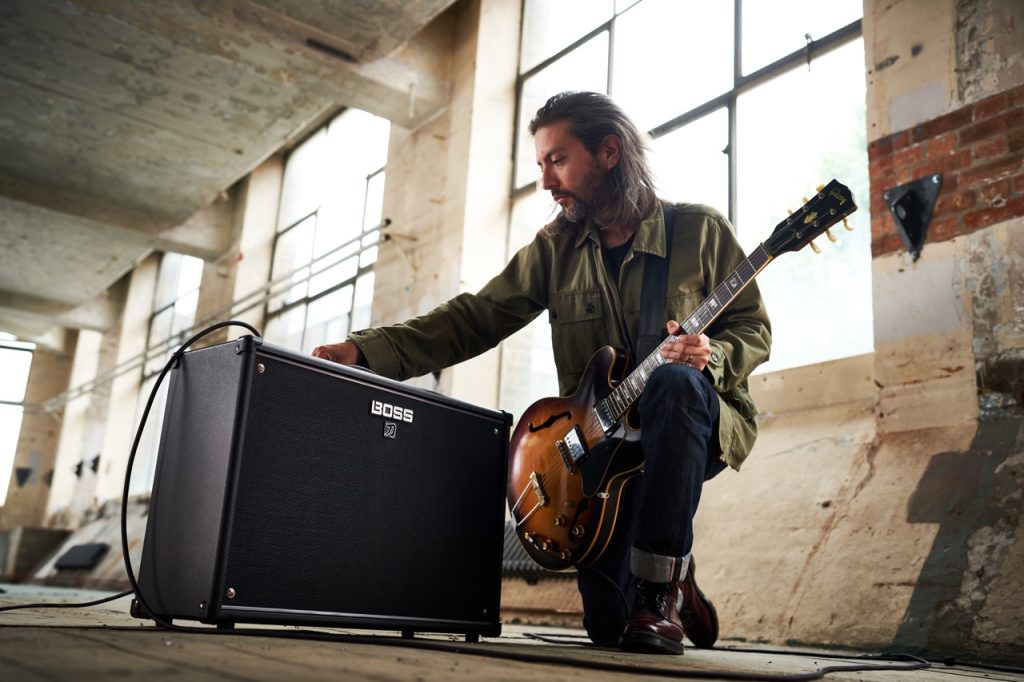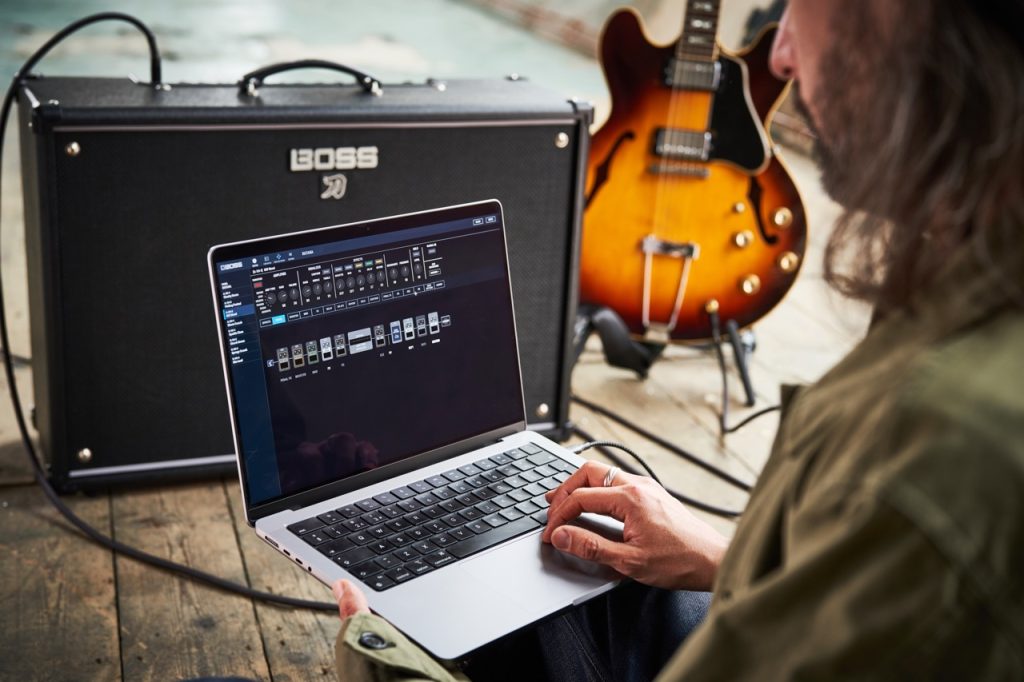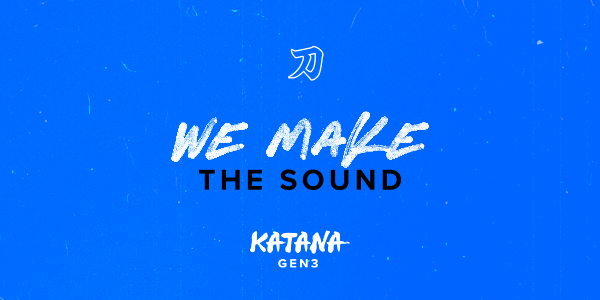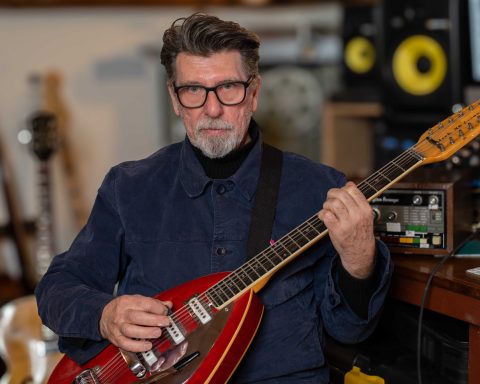Recording is an essential ability for guitar players. It’s a valuable skill to learn for many applications, from capturing basic ideas for songwriting to learning and honing your guitar skills and even crafting full-fledged albums at home. These days, creating your home studio has never been easier. With the modern accessibility of free DAWs and advances in digital recording tools and plug-ins, it’s the perfect time to start making professional quality music from home. Katana is the ideal tool for quickly delivering high-quality guitar tones and a massive range of effects.
Getting Started
There are several ways to set up Katana for home recording use. One of the easiest (and the method requiring the least amount of additional equipment) is utilizing Katana’s USB connectivity. This method lets you record directly to your DAW, complete with a built-in cabinet simulation, and access the full suite of Katana effects via BOSS Tone Studio.
Another great option is to use the Recording Output on Katana to connect your amplifier directly to your interface. As with the USB connection option, the Direct Out has a built-in cab sim, so your recording tone will match the natural room sound of your amplifier without the need for micing up the amp or playing the amplifier at high enough volumes to get the best results from the microphones themselves.
"There are several ways to set up Katana for home recording use. One of the easiest is utilizing Katana's USB connectivity."
Recording Methods
USB
To use your Katana for direct recording, connect the provided USB cable to your Katana amplifier and computer. Within your DAW, you can now select Katana as a recording interface. You can record your guitar tones directly from the Katana amplifier to a track in your DAW and playback through the amplifier speaker or the dedicated headphone output.
The advantages of recording Katana via USB are as follows. First, Katana sends audio with a built-in cabinet simulation for a well-rounded, ready-to-record amp tone. Second, you can access Katana’s full effects suite via BOSS Tone Studio while connected to your computer. While the amp-top control panel offers a broad range of built-in effects, these are expanded and can be fine-tuned and controlled in real time with greater precision through Tone Studio.

Amplifier Position
Where you position the amplifier in a room is a crucial factor when recording an amp with a closed microphone. Carpeted floors will reduce the brightness of the amp tone, lifting the amp off the floor onto a stand will reduce the low end, and hard-tiled floors will contribute to a more reflective, harsher tone. There are many real-world considerations when micing an amplifier for recording; it can be an advantageous and creative way to record a guitar, but make sure you’re happy with the setting and microphones you have available to achieve the best results.
"Where you position the amplifier in a room is a crucial factor when recording an amp with a closed microphone."
Recording Output
Another excellent method of recording the BOSS Katana is to connect the amplifier directly to your recording interface via the Recording Output on the back of the amplifier. Katana’s Rec Output is loaded with a built-in cab sim, so your recorded tone will perfectly emulate the amp sound in the room. This is a great, zero-fuss method of recording guitar. It allows you to use your regular recording interface and setup without the stress or complication of micing an amplifier. It lets you use Katana’s Power Control features and record heavily saturated tones at lower volumes.
This is an excellent way of recording at home, and the direct output is a great way to send your guitar signal to the Front of House in a live scenario. Not micing the amp will send your guitar signal to the PA without any bleed from the drums or another nearby instrument. While this method can be a straightforward way of recording, you can also fine-tune your amp tone for direct recording using the Global EQ settings in BOSS Tone Studio.

Recording Tips
Here are a few steps to achieve the best results when recording. It’s essential to use high-quality cables to connect the BOSS Katana to your interface or mixer. This reduces signal loss or interference risk and guarantees the best possible recorded amp tone.
The Katana is a highly versatile amplifier. It has numerous amp models, a broad range of EQ options, substantial effects, and a comprehensive Power Control feature that massively impacts the amplifier’s tone. It’s important to experiment as much as possible with all these features and explore everything Katana offers to discover the perfect recording tone for you.
While it’s easy to get lost in the performance when recording, it’s essential to closely monitor your recording levels, as this will avoid clipping and channel distortion and help you achieve the best and most professional-sounding recording.
"While it's easy to get lost in the performance when recording, it's essential to closely monitor your recording levels."
Software
Over the last decade, home recording has become substantially more popular and a much more viable option, even with the most straightforward setups. Numerous companies offer excellent Digital Audio Workstation (DAW) software packages with free trials or with free versions of the software available with restricted functionality. Several options are also available on an affordable monthly subscription rather than a large one-time payment.
Some popular DAWs are Pro Tools, Logic, Ableton Live, Presonus Studio One, and Reaper. All have unique features and will perform the same function of recording your BOSS Katana amplifier cleanly and clearly.
As mentioned earlier, BOSS Tone Studio is a fundamentally important part of recording your Katana amp. Tone Studio unlocks a vast range of features within your Katana. From advanced EQ settings to additional effects and expanded effects control, Tone Studio is a perfect tool to help you hone your tone, save presets, and customize your Katana, making it the amplifier you need it to be.

Post-Recording Tips
It’s important to remember that your recorded guitar track doesn’t have to be your final recorded tone. Mixing your guitar to sit correctly in the mix of a track is a crucial step towards the final finished product.
Experiment with the recorded guitar level in the mix to ensure it is audible but not overpowering. Explore panning your guitar tracks to the left and right of the mix to avoid clouding the bass and drums and to create a sense of space, especially with multiple guitar tracks on one piece of music. Try adding digital EQ onto the recorded track and experiment with boosting and cutting certain frequencies (Most DAWs will have their own comprehensive EQ plug-in built into even a basic free version of their software).
Mastering is another important element of fine-tuning and finishing a recorded track. Mastering optimizes the track’s final sound quality and helps compress and set the track volume at a standard level for streaming, CD, or vinyl reproduction.
"Experimentation is a vital part of recording and will ultimately help you to get the best possible results."
Most DAWs have a dedicated platform within their software specific to mastering a finished track. Mastering can be done manually by adding limiters and post-EQs and carefully analyzing the track. But, several fantastic tools are also out there to help guide you towards a finished product. For example, some tools can analyze your recording and apply EQ, compression, and leveling to get the best results.
The Joy of Experimentation
Recording can be a fun and gratifying part of playing guitar and making music. The BOSS Katana is a versatile tool with a comprehensive range of applications ideally suited to recording quickly, simply, and with excellent, professional-sounding results.
Make sure you explore the broad range of amp types, effects, and tones available with Katana. Experimentation is a vital part of recording and will ultimately help you to get the best possible results. Share your music with others. Seek advice from peers and those more experienced at recording. It’s the best way to hone and develop your recording skills and continue developing as a guitar player and songwriter.
- Explore the Katana Gen 3 Amplifier Series








